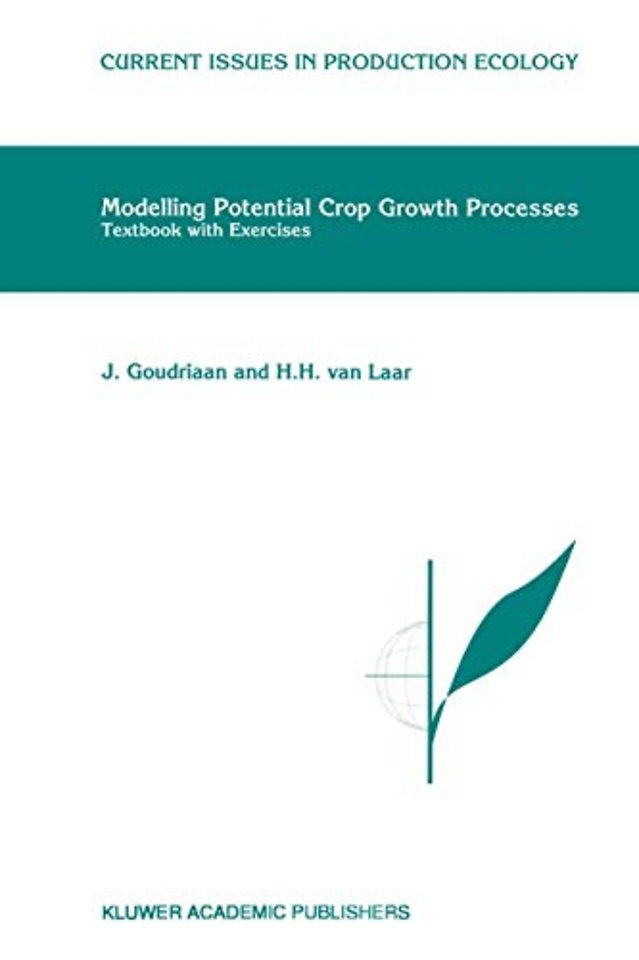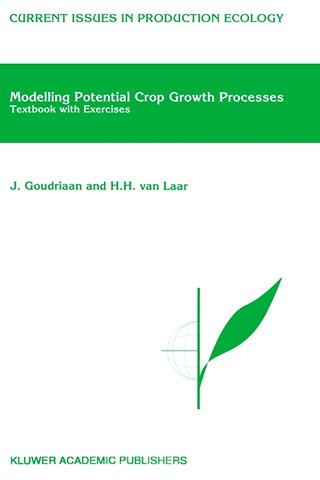Modelling Potential Crop Growth Processes
Textbook with Exercises
Samenvatting
We dedicate this book to professor C. T. de Wit (1924 - 1993) who initiated Production Ecology as a school of thought at the Wageningen Agricultural Univer sity (see Rabbinge et at. , 1990).
To acknowledge the leading role of C. T. de Wit, a recently formed graduate school at this university in Production Ecology was named after him. Production Ecology is the study of ecological processes, with special attention to flows of energy and matter as factors that determine the productivity of ecological systems. Agro-ecosystems are a special case of ecosystems which are much better suited for the productivity approach than natural ecosystems are. This is the reason for the strong role of agricultural research in production ecology.
On the other hand, it must be recognized that the spatial heterogeneity of natural ecosys tems and their species richness may alter some ecophysiological relationships. However, the basic physical, chemical and physiological processes will be the same. De Wit introduced the state variable approach as the basis for simulation mod elling. In this approach the floating character of nature is schematized into a series of snapshots over time in which the states are frozen at each separate moment.
The current state determines how the rates of change will lead to the next snapshot. This way of thinking enables a clear and workable representation of interacting simul taneous processes, without compromising on the mathematics.
Specificaties
Inhoudsopgave
2. The main seasonal growth pattern.
3. Climatic factors.
4. Assimilate flow and respiration.
5. Development and growth.
6. Radiation in crops.
7. Leaf energy balance and transpiration.
8. Analysis of leaf CO2 assimilation. References.
Appendix 1: Richards and Gompertz functions.
Appendix 2: Gaussian integration in simulation modelling.
Appendix 3: SUCROS1 - A crop growth model for potential production.
Appendix 4: SUCROS1 - adapted for soil reflection.
Appendix 5: The FORTRAN Simulation Translator (FST), a simulation language.
Appendix 6: Derivation of the equations for exponential extinction of horizontal, non-black leaves (after Goudriaan (1977)
Index.

